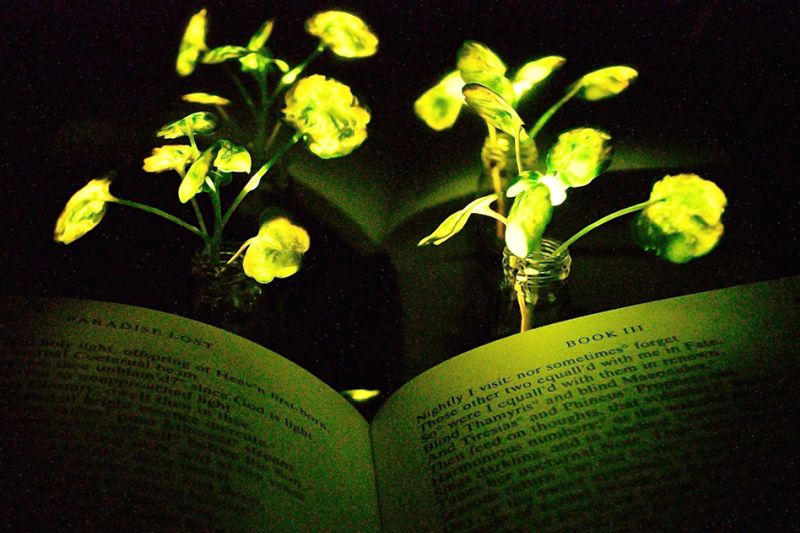Talk about eco-friendly lights, and it can’t get any greener than this – literally! Scientists at MIT have made a breakthrough in making the watercress plant glow in the dark. The day is not far when you could have a plant as your reading lamp. Instead of working in the light of LEDs, you may just be able to work in the illumination of a plant. They would add beauty to your workspace, and make it bright enough so that you won’t have to resort to any artificial light. Read on to find out more details:
The vision
According to the head researcher, the vision of the scientists is to create a plant which will behave just like a reading lamp, which can be kept indoors. The plant would be self-powering, by the energy produced during the plant’s metabolism. This means that this plant lamp does not have to be plugged into any other energy source.
How it works
MIT engineers are transforming the vision into reality. They embedded specialized nanoparticles into the leaves of the watercress plant, which allowed the plants to glow and produce a dim light for up to four hours. Further optimization will enable the plants to emit enough light to work by.
Using this technology, low-intensity indoor lights could be developed and even trees may be transformed to self-powering streetlights. This would actually conserve a lot of electricity which is currently being used to light up homes and streets.
Nanobionic plants
Plant nanobionics is a new area of research which aims to provide plants with completely new features, with the help of embedded nanoparticles. The goal of the researchers is to create plants which can take over functions which are now carried out by various electrical devices. The scientists have earlier designed plants which could detect explosives, and convey that data to a phone (smartphone). They have also created plants which could monitor drought or drought-like conditions.
The next step
After their previous experiments were a success, the team turned their attention to lighting. Lighting accounts for approximately 20% energy consumption worldwide. Plants have the capacity to self-repair, they can produce their own energy and are already used to the outdoor environment. The scientists had thus decided that it time for delving more into the field of plant nanobionics, as they can provide an alternate light source in the future.
The science behind
Image Source : news.mit.edu
In order to create the glowing plants, the MIT researchers used luciferase, the same enzyme that makes fireflies glow. The luciferase enzyme acts on a certain molecule called luciferin, which causes it to produce light. A molecule known as Coenzyme-A helps along the process, by successfully removing a byproduct produced during the reaction, which would otherwise inhibit the action of luciferase.
The three components are packaged into a nanoparticle carrier. The nanoparticles are manufactures out of materials which the US FDA has classified as “generally regarded as safe”. The nanoparticles help each of the three molecules reach the particular plant part they need to. The nanoparticles also prevent the molecules from reaching dangerously high concentrations, that might damage the plants.
The process
Silica nanoparticles were used, which were of the size 10 nanometers diameter approximately, to carry the luciferase. Larger chitosan and PLGA particles were used to carry Coenzyme-A and luciferin resp. The nanoparticles were inserted into the plants by submerging them inside a solution. They were then exposed to very high pressure, which allowed the nanoparticles to enter the plant leaves through stomata, which are tiny pores on plant leaves.
The nanoparticles which released Coenzyme-A and luciferin are allowed to accumulate in the extracellular space of inner leaf layer, which is known as mesophyll, and the smaller nanoparticles carrying luciferase enter inside the mesophyll cells. When luciferin is released gradually, it enters the relevant plant cells, in which it reacts with luciferin, making it glow.
The experiment created plants which could initially glow for approximately 45 minutes, but which was later improved to 4 hours. The light generated right now by each watercress seedling is only one-thousandth of the light required to read by. But the scientists are confident they can improve the brightness as well as the duration by optimizing concentration as well as release rates of the molecules. This could lead to completely novel indoor lighting in the future.







